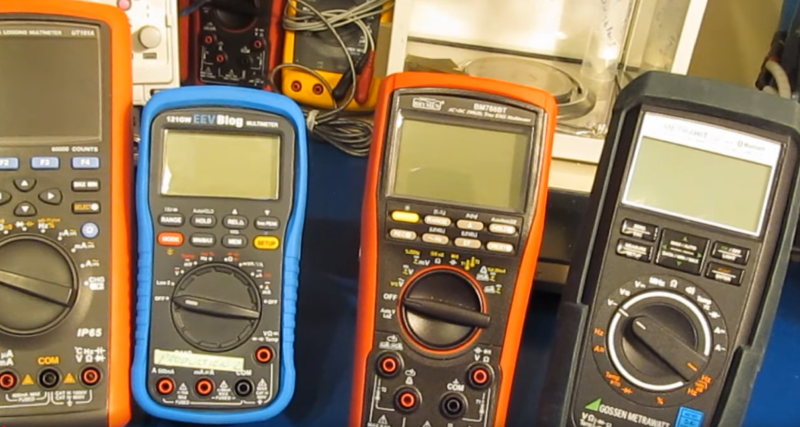If you’re into electronics you can never have too many digital multimeters (DMMs). They all have different features, and if you want to make multiple measurements simultaneously, it can pay to have a few. Over on his video blog [joe smith] reviews the new Brymen BM788BT, which is a new entry into the Bluetooth logging meter category.
This is a two-part series: in the first he runs the meter through its measurement paces, and in the second he looks at the Bluetooth software interface. And when we say “new” meter, we mean brand new, this is a review unit that you can’t yet get in stores.
According to a post on the EEVblog, this Bluetooth variant was promised five years ago, and back then Brymen even had the Bluetooth module pin header on the PCB, but it has taken a long time to get the feature right. If you scroll through the thread you will find that Brymen has made its protocol specification available for the BM780 series meters.
It looks like some Bluetooth hacking might be required to get the best out of this meter. Of course we’re no strangers to hacking DMMs around here. We’ve taken on the Fluke 77 for example, and these DMM tweezers.















I’ll say no to it just from the unbranded second hand looking cardboard box and the recycled looking piece of bubble packing material. And no test leads?
I think it’s a pre-sale test unit.
Brymen meters come with better leads than Flukes. Personally I use Probemaster super softies on everything including my Keysight bench meter.
If you buy an EEVblog meter (which are manufactured by Brymen) it will turn up in a plain white box with a few words printed on the bottom: “No bullshit packaging”. It made me chuckle.
That’s how it should be. There’s no need to waste resources on fancy packaging that will just get thrown away.
owon likely
You mean the Brymen meters are manufactured by Owon? I’m not certain but I’m pretty sure Brymen makes their own stuff. Brymen are who make the EEVblog branded meters.
I can see it’s a fuzzy continuum from “paid advertising” through “product release announcement” to “sponsored review” to “product tutorial” to “good hack”. I can’t complain, because I get more than what I pay for here, but surely we have to draw a line somewhere…
Hi Paul. I’m new here. In fact this post is my fourth post. I can assure you that my experience of the editorial process so far is that Hackaday takes its mission of creating on-topic and relevant hacks very seriously and we certainly don’t want to be in the business of shilling for anyone. This post is here because a lot of people think that bluetooth is a cool feature in a DMM.
Specially Bluetooth with a fully documented open-source protocol instead of a proprietary app that will inevitably be discontinued and succumb to bit rot when an OS update breaks it. I’d much prefer the isolation of Bluetooth to the questionable one of USB.
I’ve unsubscribed from many YouTube channels for this reason. They start off with great content then once they get big and the free products start to roll in the content becomes crapitalism masked as honest reviews.
I didn’t get that vibe from this post but I see where your coming from. We all love test and measurement gear but it’s best when the writer discloses whether the product was purchased or if it was a “gift”.
ooooh, that 4×20 vfd would be nice
I added a Wifi to a Brymen DMM (sold as another brand though) once. This one has a an IR communication, so i took an ESP8266, got these cheap IR modules. I removed the transmission IR LED, made a 3D printed case with a voltage converter and the ESP inside and a USB cord for powering it from an USB power bank, and loaded ESP-link to the ESP.
Then i had to find a software, that makes a virtual serial port to a telnet connection, which there are no open source software, except Com2Tcp (which i’m not sure you can run it on Win 10 and up, last release was 18 years ago), but there are some free for non commercial use software, which i used.
And on PC side, i used SmuView (“part of” Sigrok). It can decode the Brymen protocol and show gauges and tables and save the data. Too bad Sigrok doesn’t have support for com port redirecting.
The DMM has a fast mode, where it can record like at 10 Hz or something, which makes it a little but more useful for data collection. I was planning on using it to record from a moving vehicle, but didn’t need to in the end. Plus, the case wasn’t quite right, so the IR connection is a bit finicky.
Nice hack!